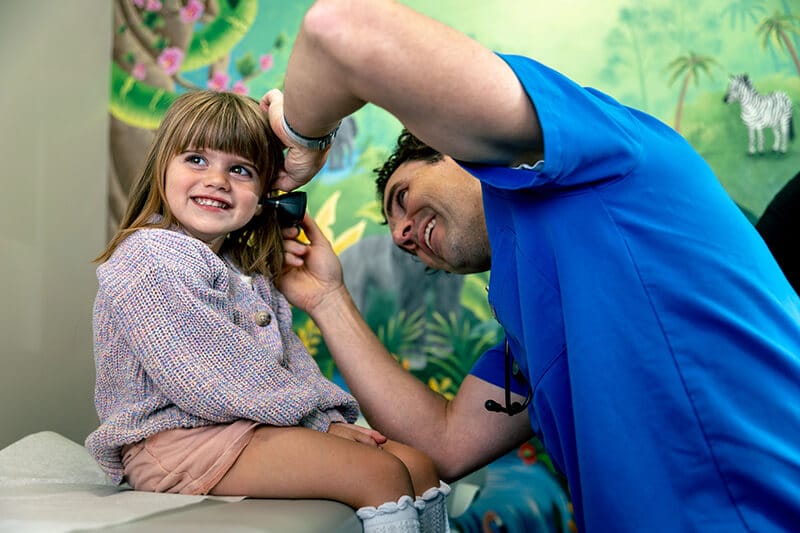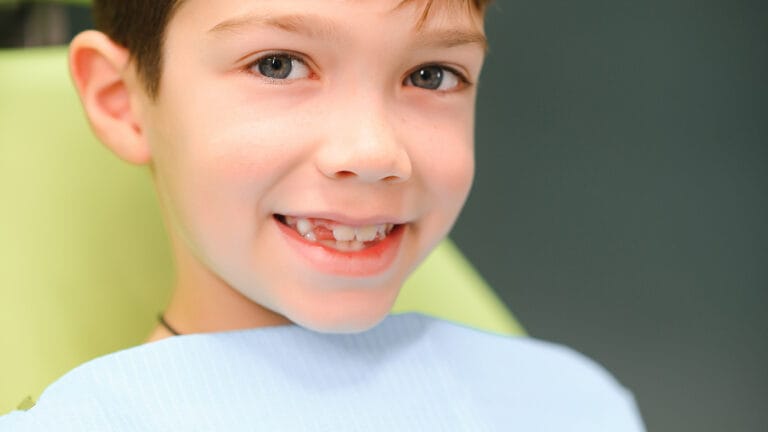A Parent’s Guide on Broken Brackets, Wires, and Other Orthodontic Concerns
Braces are an incredible innovation capable of quietly and gently correcting crooked teeth, aligning bites, and several other orthodontic concerns. Treatment typically takes a year at a minimum, during which time kids and adults still have to eat, speak, and live their lives. Along the way, they’re bound to encounter an orthodontic emergency here and there. These can occur during all kinds of ordinary activities like eating crunchy snacks, playing sports, roughhousing with friends, or simply fiddling with the mass of metal mounted to your mouth.
If something goes wrong with your orthodontic appliance, the most important thing for you to remember is not to panic. Orthodontic emergencies aren’t emergencies in the traditional sense but do pose a risk to your orthodontic plan and could be painful if left untreated. An orthodontic emergency is any situation where your braces or dental appliances aren’t performing as expected and includes anything from a broken bracket to pain or discomfort. Fortunately, most orthodontic emergencies can be addressed at home, at least long enough to get in for an appointment. Here are five of the most common orthodontic emergencies and what you should do about them.
1. Broken Brackets
Brackets are one of the primary components of conventional braces. They’re mounted to each tooth using a specialized adhesive and hold the archwire in place with the help of elastic ligatures. Modern braces are pretty reliable and designed to last the entirety of your treatment, but sometimes, through the course of ordinary life, a bracket might get knocked loose.
While your brackets are strong and want to stay put, a well-placed potato chip, a bump on the playground, picking your teeth with a toothpick, or even bumping a brace with the head of your toothbrush could knock a bracket loose. The good news is that your braces work as a collective unit, and a single loose bracket shouldn’t cause any significant problems to your well-being or your treatment plan.
If a bracket does become detached, the associated tooth is no longer connected to the archwire or receiving corrective pressure. If uncorrected, a loose bracket can extend the length of your treatment or even cause your teeth to slide back toward their previous location. The good news is you have time to act. As long as the loose bracket isn’t causing any pain or discomfort, simply call us for an appointment and we’ll get you fixed up.
2. Loose or Poking Wires
Braces rely on an archwire to provide gentle pressure on the teeth. At certain points throughout your treatment, you may also have metal ties between certain teeth. While the aim is for wires to be comfortably tucked away, they can become loose or bent, slide out of place, or even poke the inside of the mouth.
Because the archwire is held in place by the clasps on each bracket or tiny elastics, it’s unlikely to become fully detached, but it can slide out of position. Wires can come loose if you’re eating a lot of chewy foods, which might latch onto the wire and move it out of place. However, wires can slide on their own over time, and there’s likely nothing you’re doing to cause it. If the archwire moves too far to one side or a metal tie comes loose, the end might poke the gums or cheeks, causing pain. Often, you can slide the wire back into place at home well enough to hold you over until you can get in for a visit. You can also use something like an eraser at the end of a pencil and push a wire toward your tooth and away from your cheek or gum. In the event a bracket comes off a tooth but still on the wire, carefully assess the situation to avoid any discomfort or potential harm.
If you can’t address a problematic wire and it’s causing discomfort, cover the wire with dental wax and call us for assistance. In fact, keeping a bit of dental wax on hand will come in handy for almost every orthodontic emergency you encounter.
3. Lost, Broken, or Misplaced Retainer
We get it, your braces were impossible to lose, having been glued to your teeth, but retainers are meant to be worn only sometimes. Once you transition to a retainer, you’ll have a little bit more freedom and can and should take your retainer out to eat and brush your teeth. But every time you remove your retainer, there’s an opportunity for it to get lost. Having a retainer is a big responsibility and kids might need help from parents to build solid habits.
You might be tempted to think a missing retainer is no big deal, but the retention phase of orthodontic treatment is just as important as the braces phase. While wearing braces, the supporting bone softens to allow the teeth to migrate, then resolidifies once they’re in place. Teeth also shift for life as you age. Retainers can be removable or glued in and not only hold the teeth in the desired position long enough for your body to get used to the new configuration but also prevent them from shifting with age. That is why retainers are stressed to be worn for life.
Losing a retainer provides an opportunity for teeth to shift back toward their original location, potentially requiring additional treatment. Fortunately, teeth move slowly, so you aren’t going to lose your hard-won progress overnight. If you’ve lost your retainer, just give us a call for an appointment to get it replaced.
4. Swollen Gums and Braces
Swollen gums are one of the most common side effects of orthodontic treatment and it’s usually nothing to worry about. The simple act of moving the teeth can cause inflammation, though swelling is usually moderate and resolves relatively quickly on its own.
Swollen gums can also result from poor oral hygiene, a common concern with braces. Having brackets and wires in the way makes brushing and flossing more challenging, especially for children, increasing the odds of irritation and swollen gums. Regular brushing and flossing are the best ways to reduce the risk of complications arising from wearing braces. If you’re having trouble brushing and flossing, there are several flossers on the market including disposable orthodontic floss picks and gentle water flossers specifically designed to more easily move around braces. Also, it is not unusual to see some bleeding when you floss or brush. This is normal as you get rid of the bacteria causing the swollen gums and will allow the gums to become pink and healthy again.
If you do experience swelling, you can also try rinsing with warm salt water and avoiding hard or abrasive foods to give your teeth and gums a chance to recover. Additionally, maintaining regular dental checkups and cleanings are especially important during orthodontic treatment.
5. General Pain and Discomfort
Patients (especially kids) are commonly anxious about pain when getting braces. The good news is there’s no pain associated with applying braces. The process of getting your braces on or getting adjustments can be a little awkward but isn’t typically painful, so there’s no reason to worry about your orthodontic visits. However, patients commonly experience mild to moderate pain in the hours and days after application or an adjustment.
Once braces are attached, they start applying pressure to the teeth right away. Most patients start to feel it after a few hours. It usually isn’t severe and subsides after a couple of days. You may also notice some tenderness in the cheeks and lips where the brackets and wires make contact. That should also subside after the first week.
It’s recommended that you stick to soft foods during this period to let your mouth take it easy while your body adjusts. Low doses of over-the-counter pain medications can also reduce discomfort. If you have any questions or concerns, don’t hesitate to let us know! We’re here to make your orthodontic experience as smooth and pain-free as possible.






